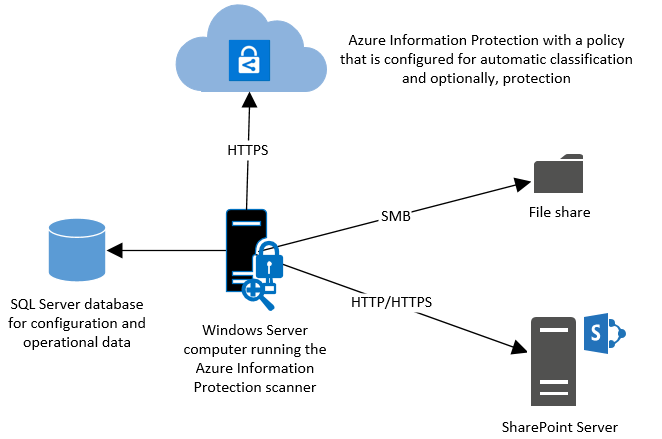
Quando falamos de dados pessoais e dados pessoais sensíveis em relação a LGPD temos que proteger emails, documentos e dados confidenciais e acompanhar o que os usuários compartilham fora da sua empresa.
É pata isso é possível utilizar Azure Information Protection – não importa onde ele esteja armazenado ou com quem ele seja compartilhado.


Azure Information Protection Scanner
Trabalhando com dados pessoais e dados pessoais sensíveis eu resolvi classificar arquivos na nuvem e em meu ambiente onpremise usando o Azure Information Protection (AIP) e pode ser executado em windows Server 2019, windows Server 2016, windows Server 2012 R2
Para examinar e classificar arquivos em repositórios de nuvem, use o Cloud App Security em vez do scanner que usarei abaixo.

Diferentemente da classificação de arquivos do File Server Resource Manager que está disponível desde o Windows Server 2008 R2 o AIP tem alguns requisitos como:
- Conta de serviço para executar o serviço do verificador
- SQL Server 2012 é a versão mínima para as seguintes edições:
- SQL Server Enterprise
- SQL Server Standard
- SQL Server Express
- Download AIP client https://www.microsoft.com/en-gb/download/details.aspx?id=53018 (Tive que reiniciar)
- Install-AIPScanner -SqlServerInstance SQLSERVER -Profile PerFilCriadoNoAzureAIP
Não foi uma tarefa fácil. Mas é perfeitamente possível e realmente funciona.
- https://docs.microsoft.com/en-us/azure/information-protection/deploy-aip-scanner
- https://azure.microsoft.com/en-us/services/information-protection/
Mais links sobre AIP
- Free trial: Enterprise Mobility + Security E5
- Subscription options and pricing: Azure Information Protection Pricing
- Download the client: Azure Information Protection client
- Download a customizable user guide: Azure Information Protection End User Adoption Guide
- FAQs: Frequently asked questions for Azure Information Protection
- Yammer: Azure Information Protection
- What’s new in the documentation: Azure Information Protection technical blog

Seja o primeiro a comentar